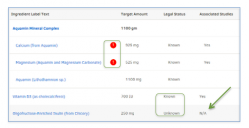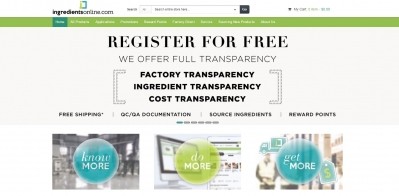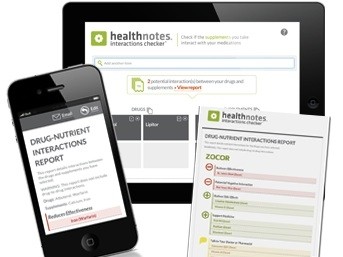New cloud-based tool aims to streamline product development process

The new tool, called Vitature, was unveiled at an industry meeting put on by the United Natural Products Alliance in Salt Lake City last week. The software package is being developed by data firm Healthnotes, which bills itself as the industry standard in information about supplement retailing.
Healthnotes CEO Skye Lininger said the company, through the contacts it has developed in the industry over the past 17 years, has identified what parts of the product development process are the most difficult, and sought to address those concerns. The goal was to develop a product that could give rise to a new way of doing things, rather than trying to tweak processes already in place.
“We have talked to about 50 companies to try to identify the industry pain points,” Lininger told NutraIngredients-USA. “We identified four major areas that make product development more difficult: Data tends to be stored in silos, inadequate software tools are being used, processes are fragmented, and intellectual property is poorly leveraged.”
Old scenario adds up to time wasted
To understand how the new tool can transform the product development process, Lininger said it’s helpful to understand how most companies go about it today. If a brand holder wanted to develop a new bone health formula, for example, one of the first steps might be to send an employee out into the market to buy products off the shelf and to spend some time online to get a feel for what the competitive landscape looks like. Then more time has to be spent to enter information such as ingredients, their forms and dosages, and how products are being marketed in terms of claims into spread sheets. Even more man hours would be needed to do a literature search to determine what kind of science is out there to support claims.
Healthnotes’ new cloud based solution automates that entire process, Lininger told the audience. Searches can be customized for a specific suite of ingredients. In the bone health example, searches could be narrowed to the formulas in the market that contain both strontium and boron or calcium and magnesium. A formula could then be constructed using business rules that filter the results using preset parameters, such as using ingredients at certain dosages and keeping raw material costs within a certain range. The resulting formula can be quickly linked with the studies done on those ingredients and gives a snapshot of the ingredients' regulatory status, Lininger said. In the time it takes for an employee to get into their car to take their trip to the store to buy an armful of products, a fairly complete picture of where a possible formula might stand in the marketplace can be constructed, he said. It’s a quick way to see how a new product might be differentiated from the competition, and what that differentiation might cost.
“As we talk to clients who have gone through the demos and what we hear that in certain parts of the process it can save an enormous amount of time. One of the biggest savings is in the overall management of the project. We know that companies can take months to go through a new product evaluation. With this tool, you can have all that information in one dashboard, and status meetings are not as necessary, and they don’t have to worry about version control,” Lininger said.
Better use of experience
The tool could also enable a more efficient use of manpower, Lininger said. In the old scenario, a fairly skilled person really ought to be assigned to the task of assessing what’s in the market. It takes experience to know what to look for in an ingredient deck, he said, and that person’s time could be better spent on higher value tasks upstream. The initial market landscape information foray can be done by a less experienced junior level employee relying on the platform’s built-in business rules to do most of the decision making.
The tool is currently in beta form and should be ready for formal market introduction during the second quarter of this year, Lininger said. The initial interest has come not just from finished goods manufacturers, he said.
“We have spoken to ingredient producers, from those that provide a straight ingredient to those that do pre blends, which in many ways can really be finished formulas, and they can put those together in a more coordinated way. If they are supplying raw materials that can get a quick look at who is in the market. And contract manufacturers are very interested as they sometimes get asked to recreate a formula that is being manufactured elsewhere,” Lininger said.









